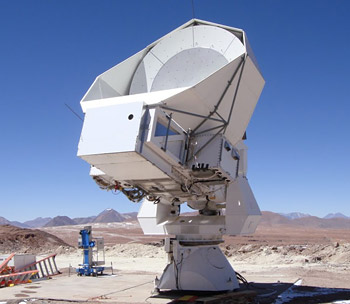Led by a team at UC Berkeley, astrophysicists dig deep into the afterglow of the Big Bang to reveal the origins of our universe.
 Everywhere we look into space, it’s there: a uniformly faint glow known as the cosmic microwave background (CMB).
Everywhere we look into space, it’s there: a uniformly faint glow known as the cosmic microwave background (CMB).
Adrian Lee regularly marvels at this omnipresent signal, for it has deeply informed our understanding of fundamental features of the universe.
“People have all kinds of cute comments about it, like the ‘CMB is the gift that keeps on giving,’” says Lee, a professor in the University of California, Berkeley’s physics department and a faculty scientist at Lawrence Berkeley National Laboratory (LBNL). “For me, what’s been surprising is how many layers of information the CMB has in it; it’s like at an archeological dig site.”
Decades of CMB study, for example, have provided critical support to the theory that our universe began 13.8 billion years ago in a blazing Big Bang. CMB analyses further reveal our cosmos to be mostly composed of dark energy and dark matter — two of the most mysterious elements in our universe.
Yet in the archeological sense, we may only be scratching the CMB’s surface. Many clues could be buried deeper, including details of the universe’s expansion, its composition, and even the existence of other universes.
Signatures from the Primordial Universe
Lee is the leader of an international team that’s using powerful telescopes located high in the Atacama desert in northern Chile to dig deeper into the CMB. The experiment, POLARBEAR, seeks to determine the orientation of the CMB’s radiation, a property called polarization. If the experiment detects a subtle twist in this polarization, the finding would strongly support the claim that our universe underwent what theorists call inflation — an astonishingly rapid expansion of the universe shortly after the Big Bang.
“Polarization is the next archeological layer in the CMB we want to explore,” says Lee. “This is where we have the chance to verify or reject the inflationary model of how the universe started.”
A three-year, $1.13 million grant from the John Templeton Foundation has made POLARBEAR possible. The Foundation’s funding has catalyzed the development, testing, and building of cutting-edge technology at the project’s heart, as well as laying the groundwork for an additional $5 million grant from the National Science Foundation.
The POLARBEAR project relies on new types of computer chip–like sensors to detect the CMB’s low-energy radiation, fashioned at Berkeley’s Marvell Nanofabrication Laboratory. The sensors will collect multiple colors of light at once, a capability that sets POLARBEAR apart from several other experiments also searching for signs of inflation.
POLARBEAR’s approach is to discriminate between true polarization signals within the CMB versus polarization “noise” produced by cosmic dust that litters the universe. The cutting-edge sensors will be deployed on three, 3.5-meter-diameter telescopes in Chile. Lee expects to begin observations in late 2017.
The Universe (or Universes?) We Know

Adrian Lee
Should POLARBEAR ultimately shed light on the primordial epoch of inflation, the door might be open for scientists to explore other questions that may only be answered by probing the very first moments of our universe’s history. It could be that the CMB records a moment when all of nature’s forces — gravity, electromagnetism, plus the strong and weak nuclear forces — were once one and the same.
And the CMB might contain hints of other realms where these forces took on different strengths than they have in the universe we know — other universes within a “multiverse.”
With respect to such exotic discoveries, Lee notes, “It’s all speculative, [saying] we’re going to detect a multiverse. But if not here [in the evidence from the CMB], then where? That’s one of the really great aspects of taking these kinds of measurements.”